Although nearly 80% of local elections officials have shared basic election details – such as voting hours and polling locations – with local law enforcement as a safety precaution, only a fraction of them have developed an incident response plan with local authorities. As harassment against elections officials reaches unprecedented levels and interest in the election process grows, Public Rights Project (PRP) is sharing a framework to help you build a task force to protect yourself and your staff, and to ensure free and fair elections in your community.
Building a Task Force
Election-related harassment is a fairly new problem, intensifying after 2020, so not all law enforcement agencies are trained specifically on the unique needs of an election office. But, since threats against local elections officials are most often reported to local law enforcement – and reports to state law enforcement have roughly doubled since 2023 – now is the time to develop a team of community leaders and first responders who can respond to incidents swiftly and appropriately.
“It is really important to have a plan of action as it relates to the different types of threats election officials experience during an election cycle,” said Cliff Tatum, former Harris County, Texas elections administrator and PRP consultant. “Coordinating who will respond to each type of threat and what that response should look like is critical to ensuring adequate resources and an appropriate response is at hand.”
A task force that operates year-round streamlines the communication process between members and helps acclimates law enforcement on how your office and elections are run. Depending on your community, a task force might include:
Election administration
Local police and sheriff’s departments
County, city, and district attorneys
Emergency management, such as fire and rescue teams
Depending on jurisdiction, state troopers or constables, FBI, other state, county, or local elected officials (i.e. county or city administrator)
Task Force Planning through the Election Cycle
Tatum, who developed this task force framework, recommends breaking down plans, tasks, and roles into three phrases: pre-election, early voting/Election Day, and post-election. While a task force may not prevent all incoming threats against you, it can send a message that community leaders are advocating for you.
Pre-Election Phase
Before the election takes place, and in anticipation of problems that might arise, election officials should engage with law enforcement partners in the following ways:
Participate in scenario planning. From a power outage to election supply issues to overly aggressive election observers, work with your task force to anticipate and prepare for a range of possible incidents. Tabletop type exercises can assist task force members in coordinating a response, determining the appropriate level of response, and developing a record of the activity and the resolution. The latter helps to create an after-action report for improving future performance.
Develop communication strategies. Determine how to communicate with partners, develop points of contact, and establish protocols for a timely and proper response to various incident types. Creating a situational report that captures election incidents are a critical part of communications.
Train and equip poll workers and election staff. Training on how incidents should be recorded and communicated to the election administrative staff is critical for ensuring the right response in a stressful moment.
Share information and collaborate with law enforcement. Have a point of contact with law enforcement, DAs, county attorneys, and emergency management to ensure they can provide oversight related to any situation you might encounter. Providing a list of all polling locations (with captains or presiding judges information) ensures that all responding parties know where locations are and can coordinate an efficient response.
Make a coordinated plan for Election Day to ensure the task force is ready to respond to any incidents. Communication protocols help keep all responders on the same page.
Early Voting and Election Day
Once election day approaches and voting is underway, various activities are crucial to ensuring that your task force is engaged and ready. Among those actions include:
Communicate with task force members regularly.
Consider having a central “war room” or some location for collaborative discussion.
Report, record, and resolve incidents according to task force protocols.
On a daily basis:
Conduct a morning check-in to ensure resources are online.
Check in with task force members at midday to update them on any outstanding activities that need attention.
Conduct a final check-in to identify any items that may need attention before the next day.
Post-Election Phase
After the election has passed, the task force remains crucial to ensuring the electoral process and protecting staff.
Your task force members should stand by for post-election activities. Canvassing, audits, and recount activities are generating more public attention, which requires resources, security, and coordination to ensure activities proceed without incident or interruption.
Produce a post-election report. Document incidents, responses, and lessons learned.
Need Assistance?
Public Rights Project provides legal support and resources specifically for local elections officials.
Check out our Guide to Election Security Resources.
Sign up for our Building an Election Security Task Force training on June 3.
Reach out to the Election Protection Hub team for free legal support.





